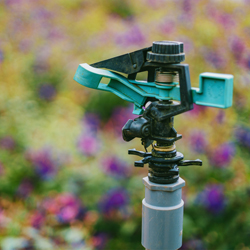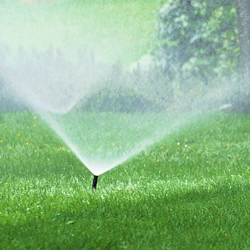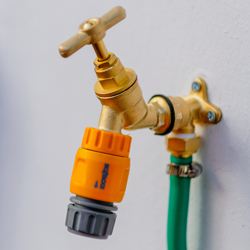Every gardener recognizes the importance of protecting new plants, delicate roots, and tender buds from the ravages of cold, snow, and ice. While it is critical to safeguard your plants from the cold, it is equally critical to protect your sprinklers from winter damage as well, or you risk not being able to properly water your garden, flowerbeds, and landscape when winter passes and temperatures rise.
How Winter Can Damage Sprinklers
Cold and ice can be brutally destructive to pipes, spigots, and sprinkler heads. As water freezes, it expands, increasing the pressure on joints and seals. With enough pressure, cracks and breaks can develop, interrupting the water flow in your irrigation system. Depending on the size of the crack, a leak could create slow seepage that will lead to root rot and could create foundation problems for your home, garage, shed, or other structure, depending on where the leak is located. Wider cracks or big breaks can create flooding that will wash away fertilizers, upset the soil balance, and drown plants.
Not only can water freeze and create problems in your sprinkler system, but frost heave in the soil around pipes can also cause small cracks and minor breaks. Sprinkler heads may also suffer from damage, both from freezing as well as potential impacts from snow blowers, plows, or other snow removal equipment.
How to Protect Your Sprinklers in Winter
Fortunately, it is easy to take the appropriate steps to keep your sprinklers from suffering when the temperature drops. While it is best to winterize your sprinkler system in autumn before there is risk of hard frosts or freezes, it is never too late to take precautionary measures to keep your sprinklers intact through a cold snap.
Before you take any measures to protect your sprinklers, read your owner’s manual for the proper winterizing procedures. If you do not have the manual, contact the sprinklers’ manufacturer for information, or ask an experienced sprinkler installation or repair technician for their recommendations. While some winterizing steps are relatively foolproof, it can be all too easy to damage your sprinklers if you accidentally use methods that are too vigorous or unsuitable for your system.
In general, when you want to protect your sprinklers from winter damage, you should…
- Shut off the main water valve to the sprinkler system, if you have such a valve. If your system is older and there is no main valve, consider updating the system to have one installed so you can have this type of control over the water flow.
- Disconnect all external hoses and other accessories, drain them, and store them safely in a shed or garage until they will be needed again in spring. This will keep these accessories from suffering damage that could impact spigots and faucets.
- Drain your entire sprinkler system. This may involve manually opening drain valves, using a drain or winterize setting on an automatic controller, or using compressed air to blow out the pipes and remove standing water. Remove as much water as possible but take care not to use too much compressed air pressure that could rupture pipes or seals.
- Drain the vacuum breaker, bleeder valves, or test cocks if those features are part of your sprinkler system. Follow instructions for draining these fixtures carefully to ensure complete drainage without risking damage.
- Insulate any exposed pipes, valves, spigots, or backflow fixtures. Foam blankets or tape, Styrofoam covers, or foam rolls are all suitable options. Be sure all the exposed metal or piping is adequately covered, and that the insulation is secure so it won’t be torn off by the wind.
- Insulate your sprinkler heads throughout your lawn. This is a step many gardeners forget, but adding a thick pile of straw, mulch, or grass clippings over the sprinkler heads and weighing it down with a couple of rocks will help protect these delicate, exposed fixtures.
- Turn off the main control panel for your sprinkler system so it will not automatically attempt to cycle through the watering program. Depending on your system, you may be able to opt for a “rain” “winter” or “off” setting without deleting zone program settings.
- Use flags or other markers to note where your sprinkler heads are located where they are near sidewalks, driveways, or other areas that may be at risk in winter. If you will shovel, plow, or use a snowblower near sprinkler heads, you want to be sure you don’t accidentally run over them, which could cause cracks or other damage.
By taking multiple steps to protect your sprinklers from winter damage, you can ensure that you’ll be ready and able to water your garden, flowerbeds, and landscape in early spring, just when new plants need an extra drink. Inspect your irrigation system carefully before you start it up in spring, just to ensure there is no damage, and make any repairs as needed before you begin your regular watering regimen. With proper care, your sprinklers will be ready and able to go as soon as they’re needed.



